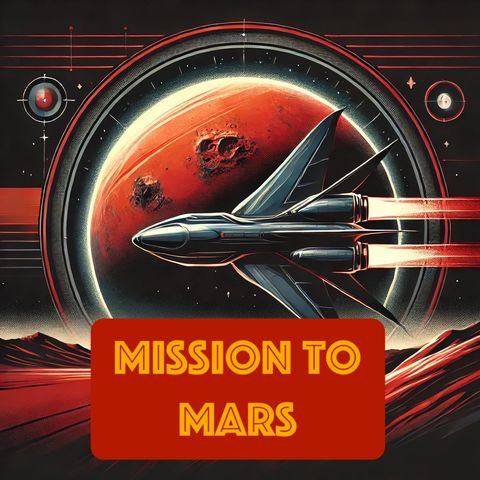Reaching for the Red Planet: The Pursuit of a Manned Mars Mission

Descarga y escucha en cualquier lugar
Descarga tus episodios favoritos y disfrútalos, ¡dondequiera que estés! Regístrate o inicia sesión ahora para acceder a la escucha sin conexión.
Reaching for the Red Planet: The Pursuit of a Manned Mars Mission
Esta transcripción es generada automáticamente. Ten en cuenta que no se garantiza una precisión absoluta.
Descripción
The idea of traveling to Mars has long fascinated humanity, and what was once the domain of sci-fi narratives is increasingly looking like a palpable future scenario thanks to advancements...
mostra másAchieving a manned mission to Mars, however, presents a plethora of technical and practical challenges. Life support systems, sustainable habitats, and protection against cosmic radiation are just some of the hurdles that need to be surmounted for a successful manned mission. The trip to Mars, which is roughly 54.6 million kilometers away when the planets are closest, takes around seven months with current technology. This requires long-term space travel solutions to issues such as muscle and bone density loss.
Environmentally, Mars is harsher than Earth with its thin atmosphere composed primarily of carbon dioxide, extreme cold, global dust storms, and high radiation levels. Any long-term human presence on Mars would require overcoming these environmental challenges through technology like habitat modules and systems to produce water, air, and food.
SpaceX's approach involves the Starship, which is being designed not just for these capabilities but also with the hope of being fully reusable, significantly cutting the cost of space travel. Alongside SpaceX, other entities including NASA with its Artemis program and international collaborations are also working on Mars exploration missions. NASA’s Perseverance Rover, which landed on Mars in February 2021, is a part of these broader efforts aimed at understanding the planet's geology and climate, searching for signs of ancient life, and paving the way for human exploration.
The timeline for when humans will first set foot on Mars remains uncertain. While Musk has suggested the 2020s for an initial manned mission, the complexities involved could push this date further. Nonetheless, the accelerating pace of technological advancement and increasing interest from public and private entities suggest that a manned Mars mission within the next few decades is becoming increasingly likely.
In essence, as the possibilities of Mars space travel evolve from fiction to potential reality, the dream of expanding human presence beyond Earth continues to inspire global efforts towards achieving what may be one of the greatest milestones in human exploration.
Información
| Autor | QP-4 |
| Organización | William Corbin |
| Página web | - |
| Etiquetas |
Copyright 2024 - Spreaker Inc. an iHeartMedia Company
